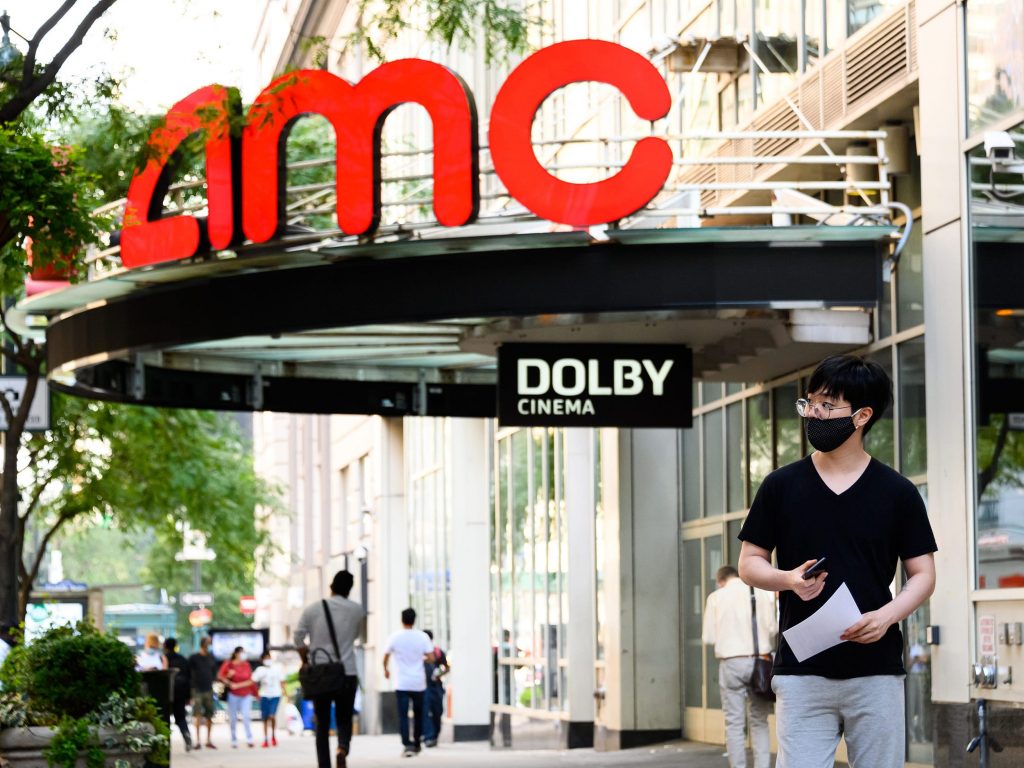- Steve Sosnick is the chief strategist at Interactive Brokers and the head trader at Timber Hill.
- In an interview, he broke down three potential drivers of AMC’s almost 2,500% surge this year.
- He also shared how long the retail-fueled rally might last amid frenetic options activities.
The meme-stock-investing saga is back in full force.
As of Monday’s market close, AMC Entertainment and GameStop were up a whopping 2,446% and 1,913% this year. The S&P 500 had gained a more modest 14%.
Unlike GameStop’s stratospheric rally, which famously upended hedge funds including Melvin Capital and Citron Research, AMC’s meteoric rise has benefited at least one hedge fund. New York’s Mudrick Capital unloaded its entire stake in AMC for a profit last week on the same day that news came out that it had purchased $230.5 million worth of the stock.
Defying the conventions of investing, AMC shares, which plunged on Thursday and Friday after the firm filed to sell 11 million shares, jumped by 14.8% on Monday. The surge is all the more incredible because the movie-theater chain has warned investors of the “risk of losing all or a substantial portion of your investment.”
Driven by Reddit traders who call themselves “apes,” the rally charged on even after filings on Friday said AMC executives had made more than $8 million last week selling their stock.
While investors might dismiss the GameStop trading frenzy of late January as a one-time phenomenon, they can no longer neglect the impact of meme stocks, led by AMC, on the market.
"I don't know that the motivations behind the meme-stock traders ever went away - they just kind of went into hibernation," Steve Sosnick, the chief strategist at Interactive Brokers and the head trader at Timber Hill, said in an interview. "I think that the true believers still believed. They faded into the background for a while, but you never saw the stocks really completely sell off to the levels they were before this all went crazy. It meant that there was still residual demand."
3 potential drivers of the sudden surge
But residual demand for a stock usually doesn't translate to its share price doubling within a few hours, which raises the question: What are the forces behind the sudden surge?
Sosnick observed that when the GameStop-led meme stocks faded in February, they were superseded as a thesis by cryptocurrencies, which reached a peak of $2.4 trillion in total market cap in May. As crypto fell to $1.5 trillion after rounds of sharp corrections, the AMC-led meme stocks were on the move again.
"I think there's a group of traders who think of the most speculative investment types as one asset class and move their focus from one to the next," he said. "I think that's where the chatter flows, and there are people who just follow the chatter and say, OK, the meme stocks work great, and then it stopped working so great. Crypto was working great, and then it stopped working great - let's take another shot at the meme stocks."
Like GameStop, AMC was beaten down by the COVID-19 pandemic - but it hadn't been a stable performer before that, often bouncing between profits and losses from one quarter to another.
AMC embraced the retail meme traders in a way that GameStop never did. The movie-theater chain launched AMC Investor Connect to directly communicate with millions of its "enthusiastic and passionate" individual shareholders, and it promised to offer free popcorn, special screenings, and other perks.
"I think, in a sense, the management at AMC was smart to realize that they were, in many ways, given this gift by being able to issue shares to generate very important operating cash," Sosnick said. "It's not the kind of thing one could do indefinitely by any means, but I think they've done their best to maximize it."
AMC, which had a 21% short interest rate as of Monday, is primed for a short squeeze and a gamma squeeze, which had turbocharged the short squeeze on GameStop shares and sent them to the stratosphere. In these situations, traders are strong-armed into buying shares to hedge their losses in existing trades.
"You can't have a gamma surge unless you have a delta surge," Sosnick said. "Gamma surges don't happen on their own - there has to be a catalyst to it, and the catalyst came from stock buying, not from the option market."
In the case of AMC options, the biggest anomaly is that the lines with the highest volume and open interest are the $145 calls, meaning the stock would have to rise over 2.5 times from its Monday close for those calls to be in the money.
Though many might assume that bullish meme traders are the buyers of these $145 call options, Sosnick said he viewed them as more bearish traders selling the calls on AMC as a proxy for shorting the hard-to-borrow shares of AMC and other meme stocks.
"While I don't doubt that some of the call buying in the $145 calls in AMC is coming from raging bulls on the stock, I am much more inclined to believe that there is a much greater likelihood that those calls are being purchased by bears who are being forced by risk considerations to buy those options for risk management purposes," he said in a research note on Monday.
How long might this meme-stock rally last?
Ultimately, for stocks to go up, investors need to keep pumping in money. Much like how the GameStop frenzy tapered off, AMC, the new king of meme stocks, won't hold its throne forever.
"I don't know how to quantify how much money is available for trades like this, but I can pretty much say it's not infinite," Sosnick said. "We saw it fade once before. It wouldn't surprise me to see it fade again."
It's also unlikely that the second coming of meme stocks will unravel immediately.
"There's an awful lot of options open interest over the next couple of weeks and next month," he said. "As long as that's there, you have the potential for the stock to do some kooky things."

